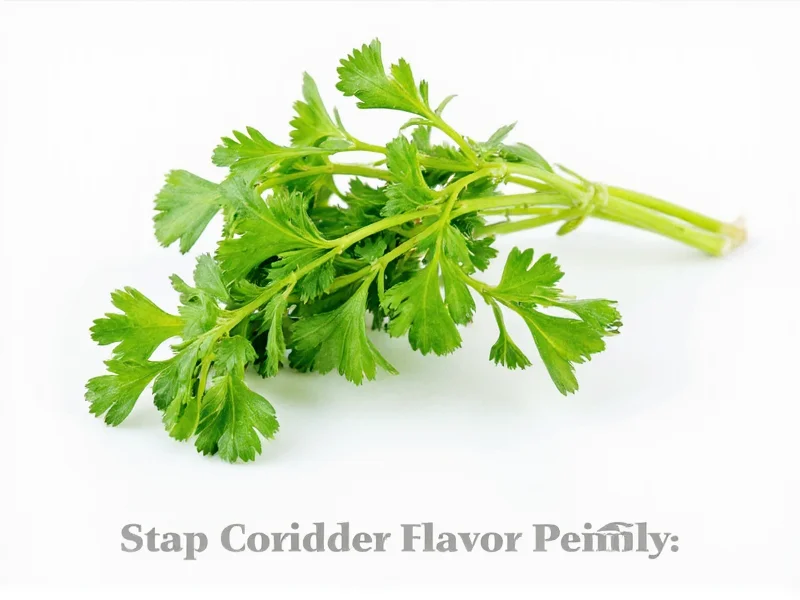Understanding the complete flavor profile of coriander requires examining both its chemical composition and sensory characteristics. This ancient spice, used for over 7,000 years across multiple civilizations, continues to be a cornerstone in global culinary traditions from Indian curries to Scandinavian breads. The distinctive taste experience of coriander stems from its unique combination of volatile compounds that interact with our taste receptors in specific ways.
The Science Behind Coriander's Flavor Chemistry
Coriander's flavor profile originates from its complex chemical composition. The seed contains approximately 0.3-1% essential oil, with linalool comprising 60-75% of this oil. This monoterpene alcohol delivers the characteristic citrus-floral aroma that defines coriander's sensory experience. Additional compounds contribute nuanced layers:
| Compound | Percentage | Flavor Contribution |
|---|---|---|
| Linalool | 60-75% | Citrus, floral, light |
| Camphor | 5-15% | Woody, herbal note |
| Gamma-terpinene | 3-10% | Citrus, pine-like |
| Petitiverine | 1-5% | Warm, spicy undertone |
These compounds work synergistically to create coriander's distinctive taste profile. The balance varies based on growing conditions, with Mediterranean coriander typically showing higher linalool content (more floral) while Indian varieties often contain more camphor (more herbal notes). This chemical complexity explains why coriander works equally well in Moroccan tagines and German rye breads.
Sensory Characteristics: Beyond Basic Taste
When evaluating coriander flavor profile characteristics, professional tasters identify several dimensions:
- Aroma: Fresh citrus (lemon/orange peel) with floral undertones and subtle spice
- Taste: Initial sweet-citrus note followed by warm nuttiness and mild pepperiness
- Mouthfeel: Smooth with minimal astringency, unlike many other spices
- Aftertaste: Clean, slightly sweet finish that doesn't linger unpleasantly
The flavor evolves significantly when processed. Whole coriander seeds maintain their flavor profile for up to a year when stored properly, while ground coriander loses potency within 3-6 months. Toasting releases additional flavor compounds through the Maillard reaction, transforming the profile from citrus-forward to more nutty and complex—a crucial technique for maximizing coriander seed flavor characteristics in cooking.
Coriander vs. Cilantro: Clarifying the Flavor Confusion
A common point of confusion involves coriander versus cilantro. In culinary terminology outside North America, "coriander" refers to both the plant (Coriandrum sativum) and specifically to its dried seeds, while "coriander leaves" or "fresh coriander" denotes what Americans call cilantro. The flavor profiles differ dramatically:
- Coriander seeds: Warm, citrusy, nutty, floral
- Cilantro (coriander leaves): Bright, herbaceous, with citrus notes but also the infamous "soapy" quality for some eaters
This distinction matters significantly when following recipes. Substituting one for the other creates entirely different flavor outcomes. Understanding what does coriander taste like versus cilantro prevents culinary mishaps and helps home cooks leverage each component's unique properties.
Practical Applications: Maximizing Coriander's Flavor Potential
Knowing the coriander flavor profile enables strategic culinary applications. Consider these evidence-based techniques:
Optimal Toasting Methods
Dry toasting in a skillet for 2-3 minutes until fragrant transforms the flavor profile, enhancing nutty notes while mellowing citrus elements. For recipes requiring ground coriander, toast whole seeds first then grind—this preserves volatile compounds better than using pre-ground spice.
Flavor Pairing Science
Coriander's chemical composition makes it exceptionally versatile. The linalool content harmonizes with:
- Fat-based carriers: Works exceptionally well in ghee or coconut milk (linalool is fat-soluble)
- Acidic components: Balances vinegar or citrus in dressings and marinades
- Complementary spices: Pairs with cumin (earthy), cardamom (floral), and turmeric (earthy)
Professional chefs often use coriander as a "bridge spice" that connects sweet and savory elements in complex dishes—a technique that leverages its balanced flavor profile characteristics.
Addressing the Genetic Flavor Perception Variation
Approximately 21% of the population carries a genetic variation (OR6A2 gene) that causes coriander to taste soapy. This phenomenon, often confused with cilantro aversion, also affects some people's perception of coriander seeds, though to a lesser degree than the leaves. For those experiencing this:
- Heat transforms the aldehydes responsible for the soapy perception
- Combining with fats reduces the intensity of unpleasant notes
- Using in spice blends masks the problematic compounds
Understanding this genetic component helps explain why some people dislike coriander despite its generally appealing flavor profile. It also informs recipe development for diverse audiences.
Storage and Freshness: Preserving Flavor Integrity
To maintain coriander's delicate flavor profile characteristics:
- Store whole seeds in airtight containers away from light and heat
- Grind only what you need immediately before use
- Freeze excess seeds for long-term storage (up to 2 years)
- Check freshness by crushing a seed—fresh coriander releases immediate citrus aroma
Old or improperly stored coriander develops a musty, one-dimensional flavor that lacks the complexity of fresh spice. This degradation directly impacts the final dish's flavor profile, making proper storage essential for serious cooks.
Global Culinary Applications of Coriander
Coriander's balanced flavor profile explains its presence in diverse culinary traditions:
- Indian cuisine: Essential in garam masala and curry blends, where it balances heat
- Middle Eastern cooking: Features in za'atar and baharat spice mixes
- European baking: Traditional in rye breads and pickling spice blends
- Mexican cooking: Used in chorizo and certain mole recipes
- Asian applications: Key component in Chinese five-spice powder variations
Each tradition leverages different aspects of coriander's flavor profile. Indian cuisine often uses roasted coriander to enhance earthiness, while Scandinavian bakers prefer raw seeds for their brighter citrus notes in breads. This versatility makes understanding coriander flavor chemistry valuable for any serious cook.











 浙公网安备
33010002000092号
浙公网安备
33010002000092号 浙B2-20120091-4
浙B2-20120091-4